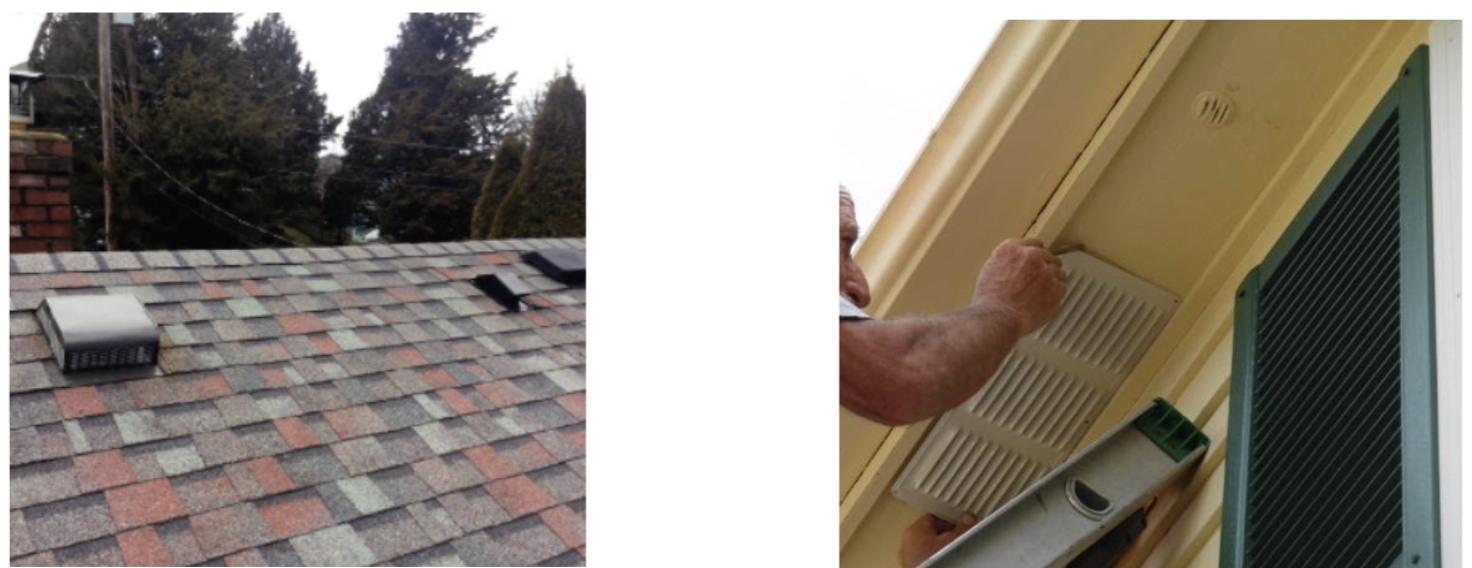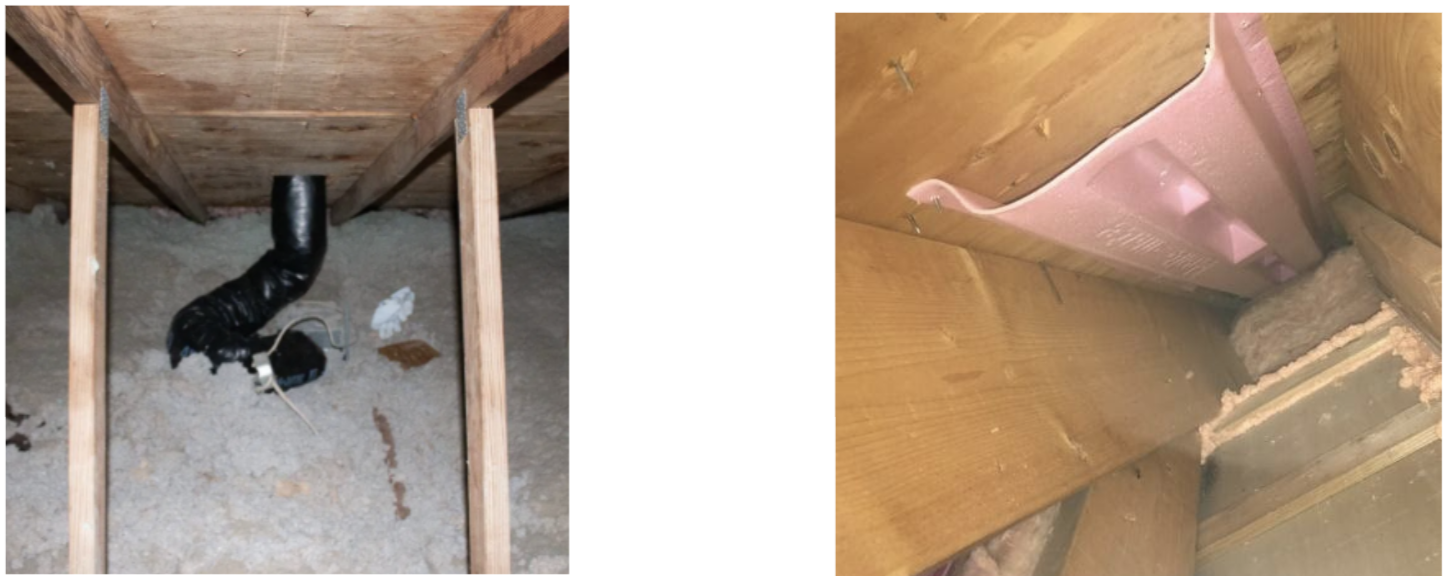ATTICS
Your attic is the highest unfinished space in your home. For most homes, this also where the majority of your heat loss happens in the winter.

The first, and most effective step in fighting heat loss is air sealing. Air moves heat and moisture much quicker than heat through conductive (surface touching surface) heat loss. Electrical, plumbing, chimney chases, and attic accesses are the largest contributors to air leakage, and should be sealed first. Materials like expanding spray foam for small penetrations, metal flashing for large chases, and weather stripping for attic accesses will be used to help air seal your attic.
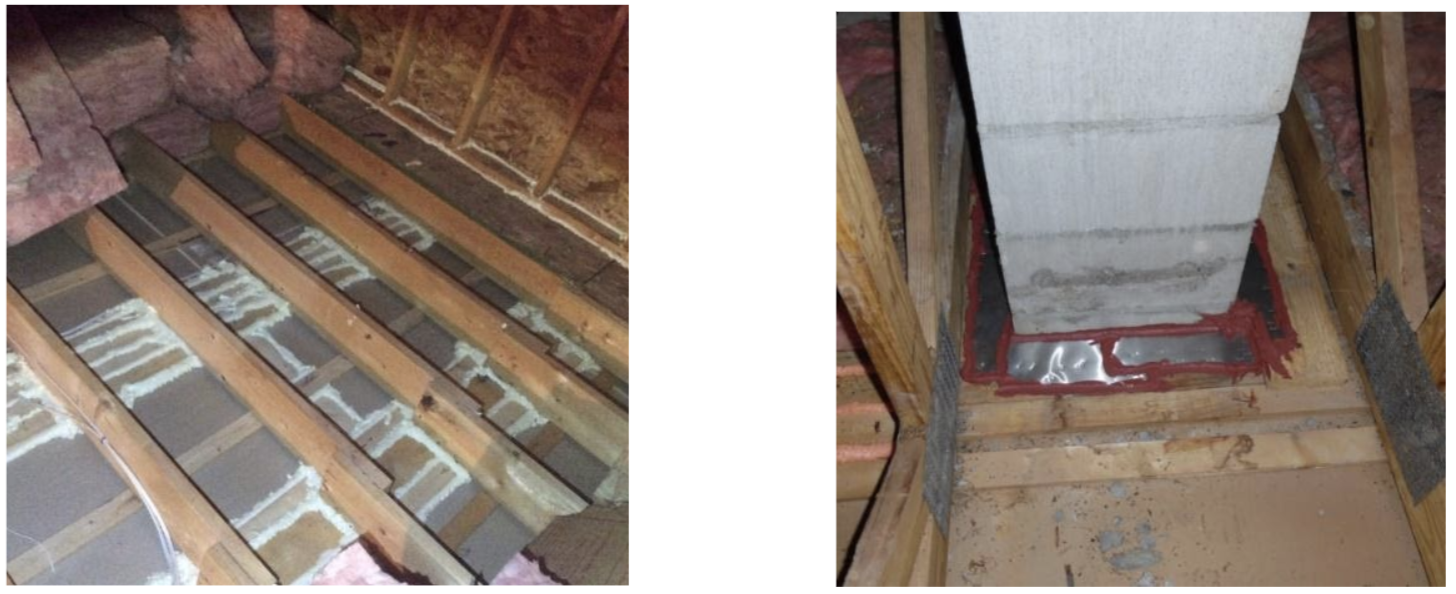
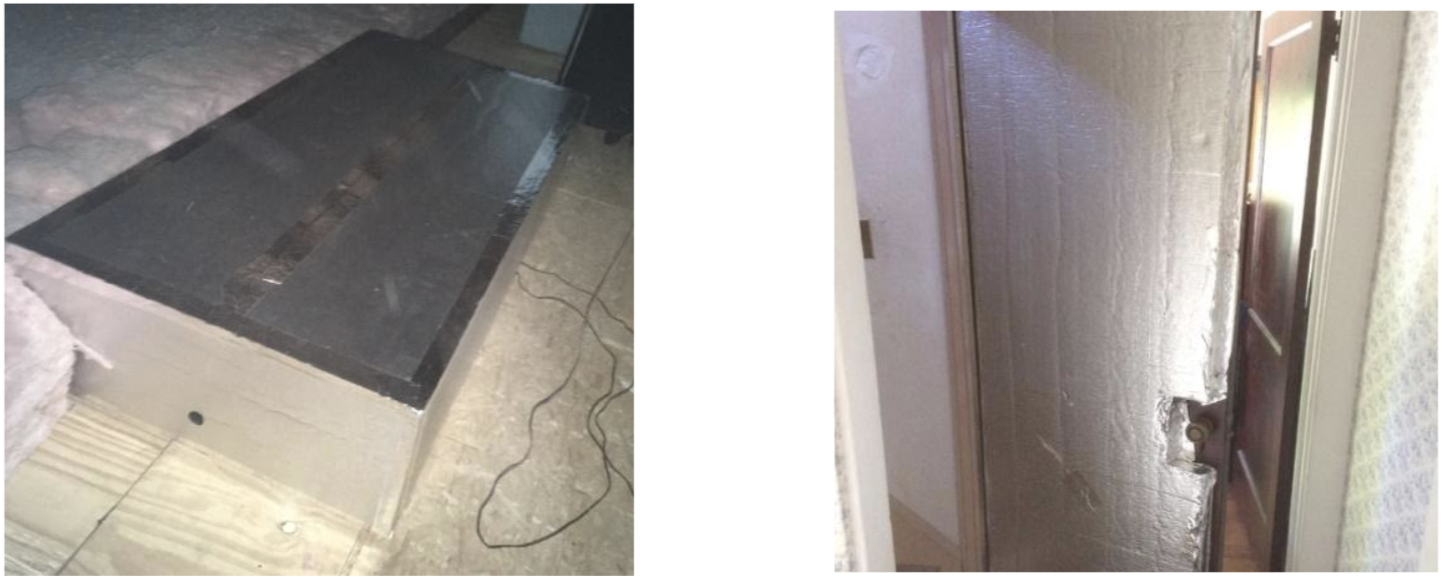
The next step in fighting heat loss through the attic is with insulation. This is typically done by adding cellulose or fiberglass on flat surfaces, and rigid foam board on vertical surfaces. Building code requires R-49 in cold climates, which is between 14-16” of cellulose or fiberglass.
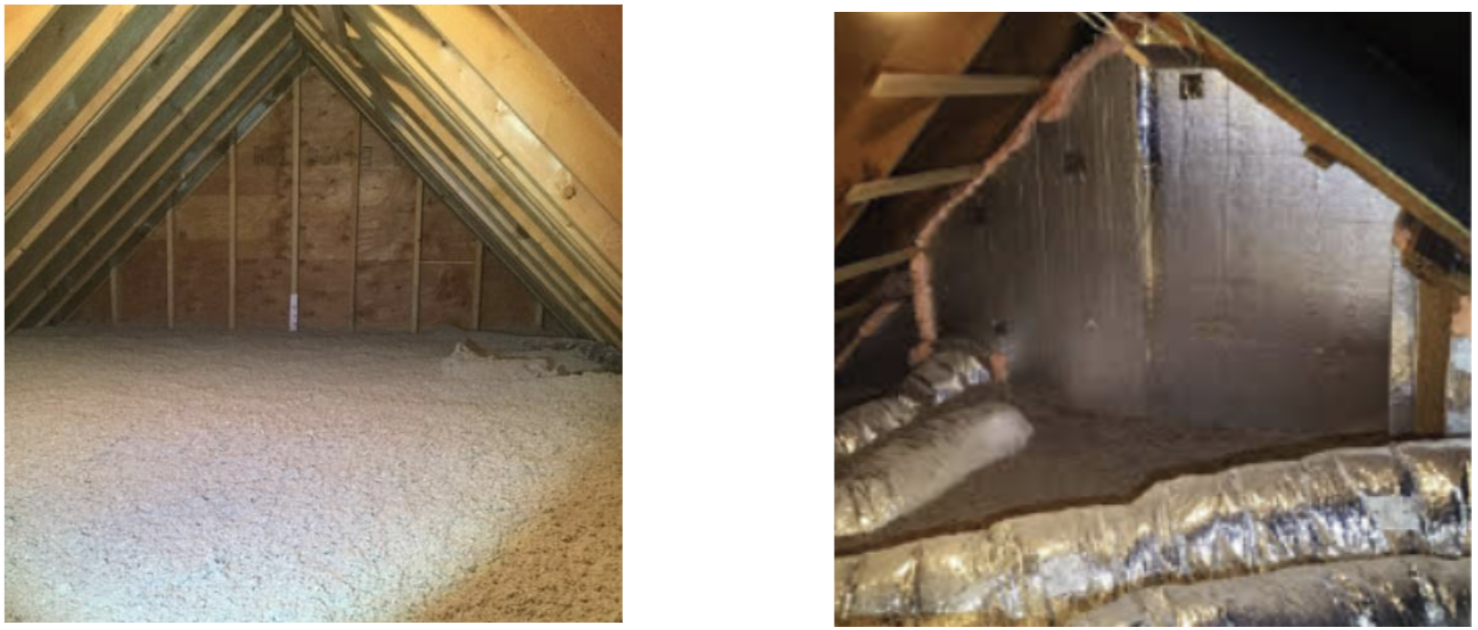
The attic should be well vented to prevent moisture build-up. If possible, ventilation should flow from the soffit/eaves of the roof to the ridge/peak of the roof. Gable vents and mid-roof vents may be needed where soffit venting is not possible. Bathroom exhaust fans should always be vented up through the roof our out through the side gable whenever possible with an insulated hose. Vent chutes are installed to keep the insulation away from the underside of the roof, and allow air flow where soffit vents exist.
